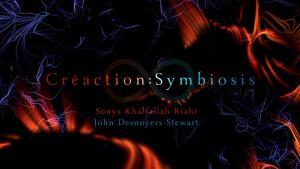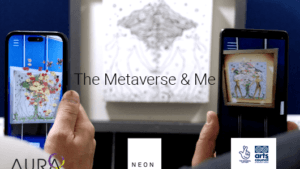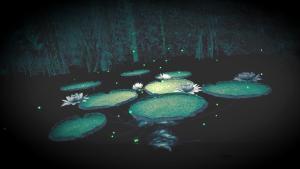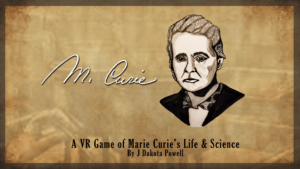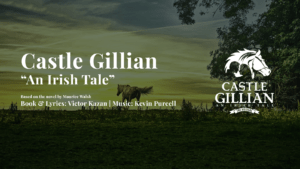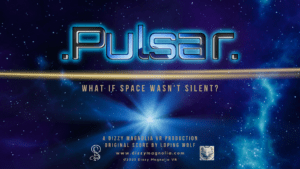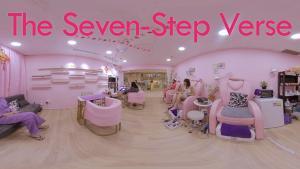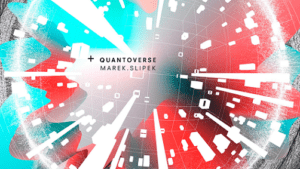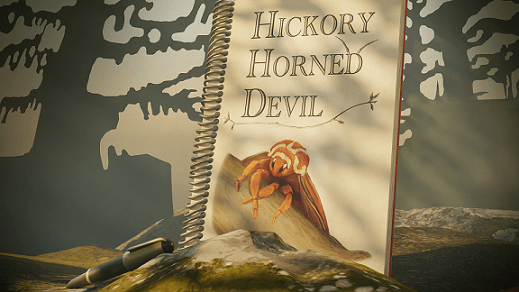
FIVARS 2023: Spotlight on Hickory Horned Devil
 In 1948 a young scientist’s world transforms when she uncovers a secret about the seeds from a particular flower patch that lead her through a magic portal to meet a wise, talking flower. FIVARS had a chance to speak with director Phoebe Titus.
In 1948 a young scientist’s world transforms when she uncovers a secret about the seeds from a particular flower patch that lead her through a magic portal to meet a wise, talking flower. FIVARS had a chance to speak with director Phoebe Titus.
What led to the creation of this piece?
Years ago we lived next door to my grandfather and one day he stopped by while we were out and one of these caterpillars fell out of a tree and onto his head. They’re truly enormous and alarming if you’ve never seen one before. Big, beautiful, monstrous looking things! But he’s the only person I know who was thrilled and nostalgic because his mother was an amateur scientist who had raised them when he was a kid. So for him he had this lovely connection with his mother in that moment. He put the caterpillar in a little bucket by the door and went home and left me a long voicemail about it.
I wanted to tell the story that could have led up to that moment, the story of a brilliant, powerful woman who was forced to compromise core elements of herself and her interests yet still had a full life as a homemaker. The stories of our grandmothers and great grandmothers tend to get reduced to their caregiving roles only, leaving the fullness of who they were out. Hickory Horned Devil is the story of what could be missing in those family stories.
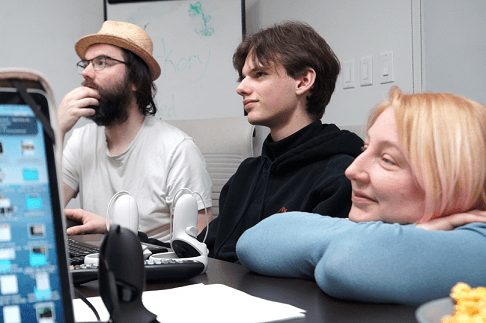
What was the production process for you and your team? What did you learn?
Setting that visual tone was the foundation of the piece so I started with the visuals first. We knew that we wanted to make the piece for an untethered headset like the Quest and that meant optimization would also have to drive production. Baking the light and then going with a hand painted, mostly unlit look got us the look I was going for while also keeping us within the technical constraints.
Music was the next big piece that drove the narrative forward. Composer Eimear MacCarrick created some lovely musical threads to drive the narrative. Developer Jamie Spencer was great about navigating the optimization and UI needs with the visual and narrative needs of the piece.
His work on the water as well as the inventory system just tied things together really beautifully and intuitively. Overall, the whole team was great about collaborating and I think all of us learned dozens of new things in the process. I couldn’t point to just one or two things that we learned along the way. I think if I had to boil down what we learned I’d say that we learned that we needed to stay humble to what was possible and then push the possible to its limit.
How did you become an immersive media content creator and why?
I’d collaborated with live theatre groups to create animated backdrops and I’d worked in animation but neither of them gave the viewer agency. I first became excited about VR in 2019 as a way to create a fully interactive real-feeling illustrated world. Then during the pandemic, the full potential of VR/AR to open up worlds that were now quite small really hit me. There’s a long way to go with the technology, but viewer driven immersive stories have the potential to put people at the heart of narratives in a way that isn’t possible in traditional media.
What is the VR/AR industry like in your region?
In Vancouver the VR/AR industry is pretty corporate, but there’s a growing community of artists working in the VR/AR space.
What do you have planned for the future?
I have plans to make another interactive short based on a feminist fairytale, and then some longer term projects including longer form interactive narrative games. I think it’s an exciting time to be a VR/AR creator because the narrative language for interactive and immersive storytelling is just being written and there’s so much potential.
What would you like to share with fellow content creators and/or the industry?
We spent a long time developing the visual style and the process we ended up with of baking the light and then using a mix of hand painted and procedural textures ended up working really well. Immersive media has so much potential for visual artists.
Do you think VR festivals like FIVARS are important?
Yes, the infrastructure around sharing content that doesn’t fit the standard frame is essential. Many traditional film festivals aren’t set up well to showcase this art form. It’s great to have curated selection of pieces and knowledgeable people on hand because the UI is often very different piece to piece so there’s always a learning curve.
FIVARS 2023 runs in person September 15-19th in Toronto and online through October 3rd.

